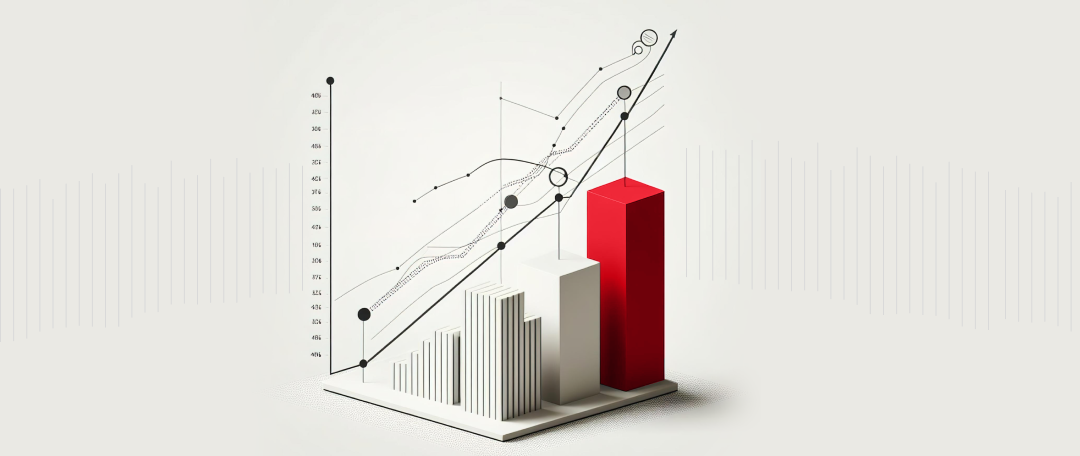In this age of digital globalization, all spheres of life as we know it have changed. The COVID-19 pandemic forever altered our shopping attitudes. The rising demand for on-demand grocery has led to a drastic shift of market retailers and wholesalers from physical spaces to the digital web, where everything is just a click away. Apps like Big Basket are the future of grocery shopping, the next evolutionary step from conventional marketplaces.
If you want to launch an on-demand grocery app but don’t know how don’t fret. Here is all you need to know about developing a grocery app like BigBasket.
Understanding the BigBasket Grocery App
BigBasket is India’s biggest online grocery store and is responsible for pioneering, what many claims is the perfect business model for grocery shopping online. The company sells food products, like fruits, vegetables, beverages, and more than 10,000 other grocery items. Not to mention, they have more than 1,000 brands on their web and mobile shopfronts.
From the very start, they kept hitting the right chords, catering to customer preferences for a convenient and quick online grocery shopping experience. Their innovative app features enabled consumers to get their daily grocery items delivered to their doorsteps, without them having to make time from their hectic daily schedules.
Here are the top 5 features of the BigBasket App:
- Wide range of grocery products
- Smart basket features and easy checkouts
- Intuitive user interface
- Embedded secured payment gateways
- Immediate confirmation of receipts of orders
How does a grocery app work?
In order for your grocery delivery solution to work seamlessly and provide the best user experience, it must include the following apps:
- Customer Ordering App
Frontend app to be used by the users to order grocery items of their liking.
- Delivery Agent App
Backend delivery app for delivery agents to successfully pick up ordered items from grocery stores, warehouses, or dark stores, and deliver them to customers.
- Admin dashboard and portal
Admin portal to provide a bird’s eye view of the business operations to be used by vendors, grocery store merchants, or admins.
Is there a need for a similar online grocery app in your region?
The first step before you embark on app development, is identifying the need; who is it that you want to target or cater to with your grocery delivery app? People’s lives have gotten busy with shouldering the responsibility that comes with simultaneously playing several roles in life. Working men and women do not have the time to go grocery shopping after long shifts at the office and by the time they get free, the markets are closed.
Grocery delivery apps can help them navigate through their tough and erratic schedules. Not only do people want the flexibility to be able to order at short notice but also receive fresh products. This can be advanced further with the introduction of ‘Schedule Delivery’ whereby one can place their order in advance either by days, week(s), or even the next month.
To put things into perspective, the grocery business is a $1 trillion industry and Nielsen is forecasting that 70 percent of U.S. shoppers could be buying groceries online by as early as 2022.
What’s the rule of the digital jungle?
Quick. On-time. Hassle-free. People want quick turnarounds since they want to save time and money from the hassle of grocery shopping, bargaining, and the irregular pricing of commodities which varies from shop to shop. Grocery delivery apps remove the problems of traditional grocery shopping and provide timely delivery of a diverse range of products, which might not be available at the customer’s nearest store.
Other attractive benefits include:
- Multiple payment methods
- Real-time delivery tracking
- Digital Wallet
- Product categorization
- Cool UI/UX with easy navigation
Remember to do your market research
Now that you have a general idea of what value your grocery app will be providing to your potential customers, it is always good to conduct market research to ensure that your app stands out. Here are a few questions you, perhaps, need to consider before developing your perfect online grocery app:
- Do similar grocery delivery apps already exist in the market?
- Who are your competitors and what mistakes (if any) are they making?
- Does your app satisfy the customer’s needs?
- What is the location of your target audience?
- What features are going to make your app stand out?
- Have you missed out on any features? Or are you including costly features that the customer will most likely not use?
Having good market research would enable you to choose the right business model complemented by the features that fit your business needs. If you are looking to cut time and effort on the research part, it’s best to conduct remote design sprints for the idea that makes it easier for you to choose the best type of online grocery app you want to build. Now, what could be your options when it comes to the types of online grocery apps?
Types of online grocery apps
Each type of grocery app comes with its own functions catering to unique sets of business needs and target audiences. The most common grocery apps can be categorized into 4 types mentioned below:
AGGREGATORS
These stores integrate nearby grocery stores into one app platform. Customers can choose to order what they want from the listed options. All stores deliver with real-time tracking of delivery agents through the mobile app.
MARKETPLACES
Similar to aggregators in all respects, marketplaces differ in their delivery mechanisms. Here, the vendor is in charge of every online order, picking up groceries and delivering them to customers doorsteps.
SINGLE STORES
This app represents a single grocery store, which is responsible for updating online products, handling orders, delivery, payments, feedback, and app maintenance. This is usually a go-to option for small to medium stores.
GROCERY CHAINS
These largely consist of big wholesalers and retailers who have an online presence as well as mobile apps. They offer diverse product ranges in conjunction with warehouse facilities, managing orders, timely delivery, and feedback.
What is the best grocery business model for you?
Once you have identified your target market, you need to figure out what kind of online grocery business model you want. Each model has different functions and conducts business in different ways. This is a decision that only you can make based on the risks, returns, extent of control, and investment that best suits your needs.
Warehouse model requires a larger space for stocking grocery essentials, moreover, warehouses are usually situated outside of the town. Storing perishable goods like grocery essentials can be challenging and costly. One of the main drawbacks of this model is that quick and flexible deliveries can be challenging to fulfill.
A recent model that grasps a lot of attention from grocery businesses is dark stores. Nearby smaller distribution centers have assigned staff to fulfill the delivery request and handover to the delivery agents, who can deliver the ordered essentials quickly and efficiently. This model enables businesses to offer same-day instant delivery of fresh grocery items while keeping operations streamlined.
Nonetheless, the most on-trend delivery model is the ship-from-the-store model, a convenient, cost-effective, and on-demand model. It enables businesses to onboard multiple grocery chains on their app, and the delivery agents, upon request of a customer, can deliver the product of their liking, from the stories they usually buy from, at their convenience. This model comes with lucrative benefits such as same-day delivery, customer engagement, warehousing grocery marts, and streamlined logistics.
Popular features to add to your grocery app
Same-day delivery service, real-time order tracking, and how quickly the feedback and requests are catered to, are all top features of popular on-demand grocery apps. Having convenient and time-saving features will help you retain customers and attract future ones.
- User registration: User sign-up/sign-in, profile management, forgot password, verify email and phone number
- Operational features: Product search, filter search, search suggestions, payment methods and gateways, coupons and discount codes, check out, wish list, shopping cart, counter for quantity
- Customer data: Location of the customer, address search, pin address
- Delivery notifications: Pick-up time slot, delivery agents’ tracking, delivery agents’ contact, express delivery, order cancellation
- Ratings and reviews: Feedback of multiple-scale services, delivery agents’ ratings, support and help, product quality rating, review and feedback
The features you choose for your app can become your main USPs, providing you with an edge against the incumbent market competitors. If anyone of these is compromised, the very purpose of a grocery app will be defeated.
The development of a grocery delivery app like BigBasket is not that simple hence in order to develop a highly scalable grocery delivery app, it is necessary to know the tech and the resources that go into its development.
Technologies required to build an app like BigBasket
For any grocery app to be a success, it requires solid front and back-end technologies for it to be effective and scalable. The following are software development requirements that may aid you in deciding which technologies best serve your business needs:
- App Platforms: iOS, Android, Web Apps
- Backend: Python, .Net, Java, Node.js
- Frontend: Angular, ReactJS
- 3rd Party Apps: Google Maps
- Push Notifications: APN, Twilio, Firebase
- SMS, Voice, and Phone Verification: Twilio, Nexmo, Sinch
- Cloud Environment: AWS
- Payments: Braintree and PayPal, E-Wallets, Stripe
- Real-Time Analytics: Spark Streaming, Apache Flink
- Mandrill: Relevant to emails
- Database: Cassandra, MongoDB
- Traffic Analytics: Flurry, Google Analytics
Having the tech part figured out for the app is essential to understand the development cost as well as the required tools to enhance the grocery app’s functionality.
How much does it cost to make an app like BigBasket?
There is a multitude of factors involved which contribute to the final cost of the app. The cost of developing a grocery service app depends on what you want your app to be, hence you control the cost. You will have to decide the scale of your grocery app whether you want a website, an application, or both. Costing is also compounded by the time constraints of finalizing the details of the project, developing the app, and testing it, which is time-consuming, depending on the complexities of the app. The longer it takes to develop the app, the costlier it gets, whereas, chances of compromised quality also exist if you want the time reduced. Once the app is launched, there are maintenance and running costs. Thus, time, quality, and cost have to be weighed out. You need to find the right balance between the two.
Another better way to get your grocery app developed with instant deployment, without having to pay for development is the SAAS approach. It involves using an off-the-shelf white label on-demand delivery solution, that would work on a pay-as-you-go model. These solutions require zero deployment costs, as software companies earn a fixed cut on every delivery.
If you want your online grocery app to go live within 2 weeks, we can give you that with our top-of-the-line On-demand delivery management solutions.
What’s next?
Now what you have to do is conduct analysis and research of the opportunities and challenges that exist in this sector and find the right balanced solution between trends, business strategies, and technologies. All of this might be daunting initially, however, you only need to follow the guidelines provided and everything will automatically fall into place. It’s essential to not be intimidated by the adjustments you may have to make to your strategies and app because we do not live in a homogeneous world. As you may have heard, those who do not evolve, get left behind – so buckle up for an exciting journey.






